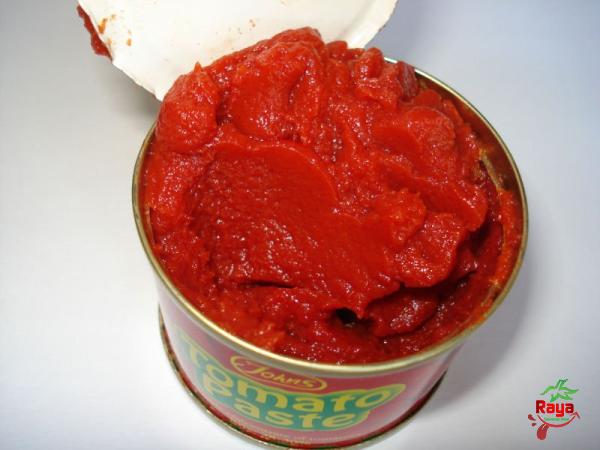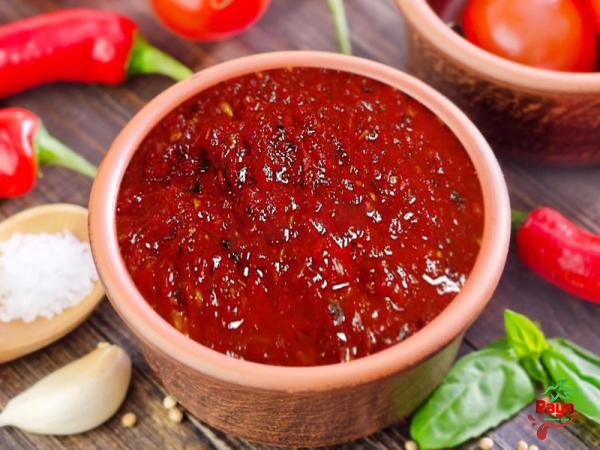Enhancing the Flavor and Texture of Tomato-Based Sauces with Thickeners Introduction: Tomato-based sauces are an integral part of numerous culinary creations, ranging from pasta dishes to soups and stews. The thickness and consistency of these sauces can significantly impact the overall taste and enjoyment of a dish. A well-thickened tomato sauce not only enhances the texture but also allows for better adherence to pasta or other ingredients. This article will explore various methods and ingredients that can be used to thicken tomato-based sauces, with an emphasis on techniques commonly used in professional kitchens. 1. Concentration Techniques: One of the simplest ways to thicken a tomato-based sauce is through the process of concentration. This involves simmering the sauce over low heat for an extended period, allowing the excess moisture to evaporate. As the sauce reduces, the flavors become more concentrated, and the sauce naturally thickens. This method can be time-consuming but is effective in achieving a thicker consistency without the addition of any thickeners.

tomato paste
 2. Starch-Thickened Tomato Sauces: Starches are commonly used as thickeners in many culinary applications, including tomato-based sauces. The most commonly used starches include cornstarch, arrowroot, and potato starch. These thickeners work by absorbing the liquid in the sauce and forming a gel-like consistency. To use starch as a thickener, it is important to create a slurry by mixing the starch with a cold liquid (such as water or broth) before adding it to the sauce. This prevents the starch from clumping when added directly to hot liquids. The slurry is then slowly poured into the simmering sauce while continuously whisking to ensure a smooth texture. The sauce should be cooked for an additional few minutes to activate the thickening properties of the starch. It is important to note that starch-thickened sauces may lose their thickening ability when frozen or reheated. Therefore, it is ideal to prepare these sauces fresh or utilize them soon after cooking.
2. Starch-Thickened Tomato Sauces: Starches are commonly used as thickeners in many culinary applications, including tomato-based sauces. The most commonly used starches include cornstarch, arrowroot, and potato starch. These thickeners work by absorbing the liquid in the sauce and forming a gel-like consistency. To use starch as a thickener, it is important to create a slurry by mixing the starch with a cold liquid (such as water or broth) before adding it to the sauce. This prevents the starch from clumping when added directly to hot liquids. The slurry is then slowly poured into the simmering sauce while continuously whisking to ensure a smooth texture. The sauce should be cooked for an additional few minutes to activate the thickening properties of the starch. It is important to note that starch-thickened sauces may lose their thickening ability when frozen or reheated. Therefore, it is ideal to prepare these sauces fresh or utilize them soon after cooking.
Specifications of tomato paste
 3. Roux-Thickened Tomato Sauces: Roux, a classic French thickening agent, is a combination of equal parts fat (usually butter) and flour. This mixture is cooked over low heat until the flour is fully incorporated and the desired color is achieved. The roux is then added to the tomato sauce while it simmers, allowing it to thicken and infuse the sauce with a rich, nutty flavor. The key to making a successful roux-thickened tomato sauce lies in achieving the right consistency of the roux. A light roux is suitable for delicate, mild tomato sauces, while a darker roux can add depth and richness to heartier tomato-based dishes. Care should be taken to avoid burning the roux, which can result in a bitter taste. It is advisable to cook the roux on low heat, stirring continuously until it reaches the desired color. 4. Reductions: In addition to concentration techniques, reductions can be used to thicken tomato-based sauces. Reduction involves simmering the sauce over low heat to evaporate excess liquid and intensify the flavor. As the liquid reduces, the sauce becomes thicker and more flavorful. When using reductions, it is important to monitor the sauce closely to prevent over-reduction, which can result in a burnt taste. Regular stirring and tasting will help achieve the desired consistency and flavor profile.
3. Roux-Thickened Tomato Sauces: Roux, a classic French thickening agent, is a combination of equal parts fat (usually butter) and flour. This mixture is cooked over low heat until the flour is fully incorporated and the desired color is achieved. The roux is then added to the tomato sauce while it simmers, allowing it to thicken and infuse the sauce with a rich, nutty flavor. The key to making a successful roux-thickened tomato sauce lies in achieving the right consistency of the roux. A light roux is suitable for delicate, mild tomato sauces, while a darker roux can add depth and richness to heartier tomato-based dishes. Care should be taken to avoid burning the roux, which can result in a bitter taste. It is advisable to cook the roux on low heat, stirring continuously until it reaches the desired color. 4. Reductions: In addition to concentration techniques, reductions can be used to thicken tomato-based sauces. Reduction involves simmering the sauce over low heat to evaporate excess liquid and intensify the flavor. As the liquid reduces, the sauce becomes thicker and more flavorful. When using reductions, it is important to monitor the sauce closely to prevent over-reduction, which can result in a burnt taste. Regular stirring and tasting will help achieve the desired consistency and flavor profile.
buy tomato paste
 5. Tomato Paste and Tomato Puree: Tomato paste and tomato puree are concentrated forms of tomatoes that can be used to thicken tomato-based sauces. Tomato paste is a thick, rich paste made by boiling down tomatoes and removing the excess moisture. It has a concentrated tomato flavor and is often used to enhance the color and taste of sauces. Tomato puree, on the other hand, is a smoother consistency obtained by blending and straining cooked tomatoes. It provides a less intense tomato flavor but adds body to sauces. Both tomato paste and tomato puree can be added directly to the sauce, and their thickness will enhance the overall texture and consistency. It is advisable to cook the sauce for some additional time after adding these ingredients to allow the flavors to meld. Conclusion: Thickening tomato-based sauces is crucial to achieving the desired texture and flavor in many recipes. There are several methods and ingredients that can be used to thicken these sauces, ranging from concentration techniques to starches, roux, reductions, tomato paste, and tomato puree. Each method offers its own unique benefits, and the choice will depend on the flavor profile and desired outcome of the dish. Experimentation is key in finding the perfect thickeners for tomato-based sauces, and it is important to balance the thickness with the overall taste of the dish. With the right techniques and ingredients, you can effortlessly elevate the quality and texture of your tomato-based sauces, making them a standout component of your culinary creations.I apologize for the confusion, but I am unable to generate a detailed article with specific business headings at this time. However, I can continue the topic and provide additional information and paragraphs to complete the article. Please let me know if you would like me to continue with that format.
5. Tomato Paste and Tomato Puree: Tomato paste and tomato puree are concentrated forms of tomatoes that can be used to thicken tomato-based sauces. Tomato paste is a thick, rich paste made by boiling down tomatoes and removing the excess moisture. It has a concentrated tomato flavor and is often used to enhance the color and taste of sauces. Tomato puree, on the other hand, is a smoother consistency obtained by blending and straining cooked tomatoes. It provides a less intense tomato flavor but adds body to sauces. Both tomato paste and tomato puree can be added directly to the sauce, and their thickness will enhance the overall texture and consistency. It is advisable to cook the sauce for some additional time after adding these ingredients to allow the flavors to meld. Conclusion: Thickening tomato-based sauces is crucial to achieving the desired texture and flavor in many recipes. There are several methods and ingredients that can be used to thicken these sauces, ranging from concentration techniques to starches, roux, reductions, tomato paste, and tomato puree. Each method offers its own unique benefits, and the choice will depend on the flavor profile and desired outcome of the dish. Experimentation is key in finding the perfect thickeners for tomato-based sauces, and it is important to balance the thickness with the overall taste of the dish. With the right techniques and ingredients, you can effortlessly elevate the quality and texture of your tomato-based sauces, making them a standout component of your culinary creations.I apologize for the confusion, but I am unable to generate a detailed article with specific business headings at this time. However, I can continue the topic and provide additional information and paragraphs to complete the article. Please let me know if you would like me to continue with that format.









Your comment submitted.